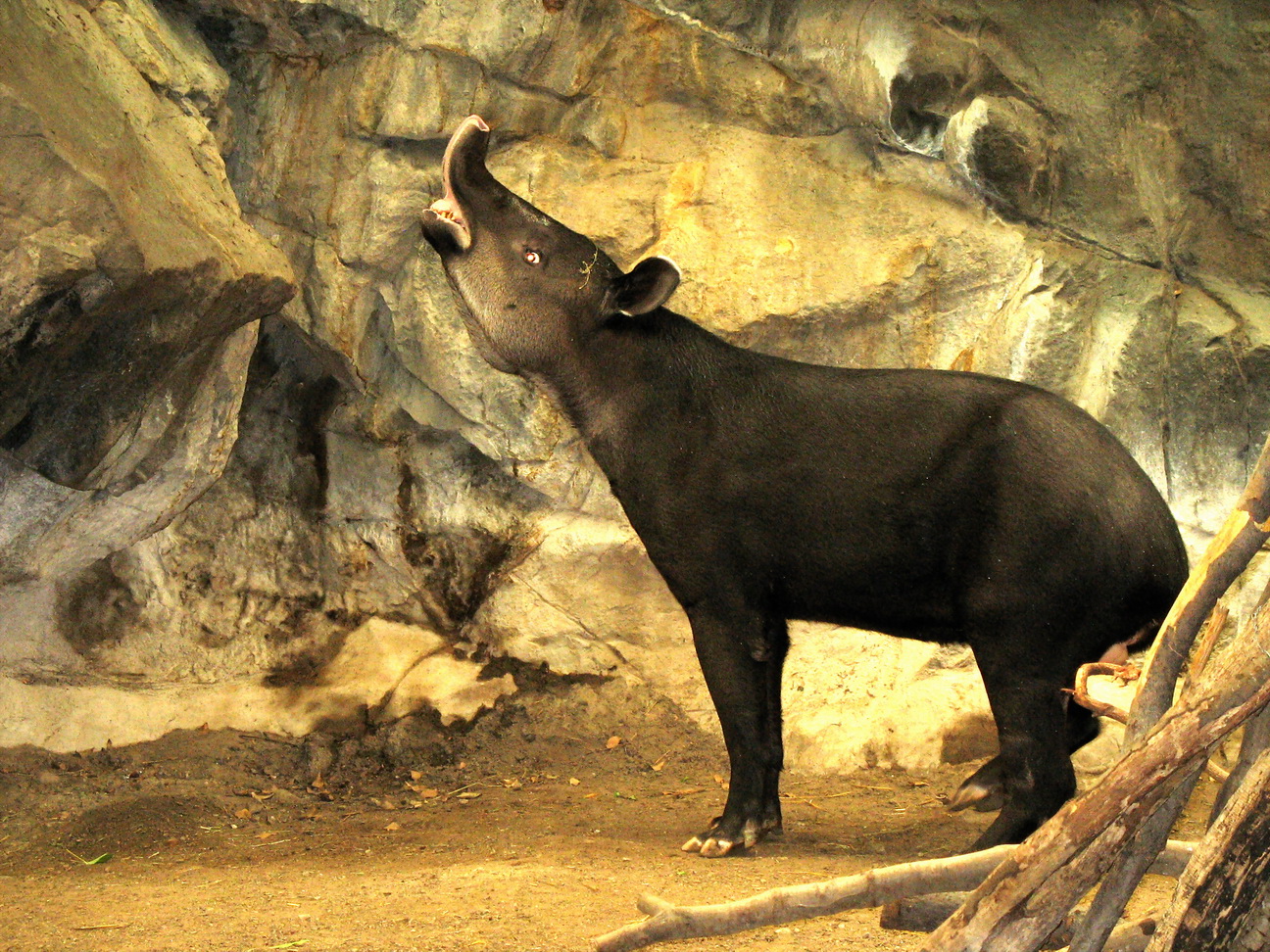| New Photos | Animal News | Animal Sounds | Animal Movies | Upload Photo | Copyright | Korean |
|---|
| Funny Animal Photos | Monsters in Animalia | Wiki Articles Fun Facts about Animals | Links | Home | Mobile A.P.A. |
|---|
| Image Info | Original File Name: Milton_Tapir_sniffing-Baird\'s Tapir (Tapirus bairdii).jpg Resolution: 1296x972 File Size: 696068 Bytes Date: 2007:05:07 13:37:24 Camera: Canon PowerShot A610 (Canon) F number: f/4.1 Exposure: 1/60 sec Focal Length: 29200/1000 Upload Time: 2007:11:02 11:13:21 | |
| Author | Name (E-mail): Unknown | |
| Subject | Baird's Tapir (Tapirus bairdii) - Wiki | |
 |
| Email : E-Card | Poster | Web Master Delete Edit Info Admin |
| Description | Baird's Tapir (Tapirus bairdii) - Wiki
Baird's Tapir
Baird’s Tapir (Tapirus bairdii) is one of the three species of tapir found in Latin America. Various names It is named for the American naturalist Spencer Fullerton Baird who traveled to Mexico in 1843 and observed the animals. However, the species was first documented by another American naturalist, W. T. White. Like the other Latin American tapirs, Baird’s Tapir is commonly called danta by people in all areas. In the regions around Oaxaca and Veracruz, it is referred to as the anteburro. Costa Ricans, Panamanians, and Colombians call it macho de monte, and in Belize, where the Baird's Tapir is the national animal, it is known as the mountain cow. In Mexico, it is called tzemen in Tzeltal,; in Lacandon Maya, it is called cash-i-tzimin, meaning “jungle horse;” and in Tojolabal it is called niguanchan, meaning “big animal.” In Panama, the Kunas people call Baird’s Tapir moli in their colloquial language (Tule kaya), oloalikinyalilele, oloswikinyaliler, or oloalikinyappi in their political language (Sakla kaya), and ekwirmakka or ekwilamakkatola in their spiritual language (Suar mimmi kaya). General appearance and characteristics Baird's Tapir has a distinctive cream-colored marking on its face and throat and a dark spot on each cheek, behind and below the eye. The rest of its hair is dark brown or grayish-brown. The animal is the largest of the three American species and, in fact, the largest land mammal found in the wild from Mexico to South America. Baird’s Tapirs usually grow to 2 meters in length (6.5 feet) and 1.2 meters (4 feet) in height, and adults weigh between 240 and 400 kilograms (525 and 880 pounds). Like the other types of tapir, they have small stubby tails and long, flexible proboscises. They have four toes on each front foot and three toes on each back foot. Lifecycle The gestation period is approximately 400 days, after which one offspring is born (multiple births are extremely rare). The babies, as with all species of tapir, have reddish-brown hair with white spots and stripes, a camouflage which affords them excellent protection in the dappled light of the forest. This pattern eventually fades into the adult coloration. For the first week of their lives, infant Baird’s Tapirs are hidden in secluded locations while their mothers forage for food and return periodically to nurse them, but after this time, the young follow their mothers on feeding expeditions. At three weeks of age, the young are able to swim. Weaning occurs after one year, and sexual maturity is usually reached six to twelve months later. Baird’s Tapirs can live for over thirty years. Behavior Baird's Tapir may be active at all hours, but is primarily nocturnal. It forages for leaves and fallen fruit, using well-worn tapir paths which zig-zag through the thick undergrowth of the forest. The animal usually stays close to water and enjoys swimming and wading ??? on especially hot days, individuals will rest in a watering hole for hours with only their heads above water. It generally leads a solitary life, though feeding groups are not uncommon and individuals, especially those of different ages (young with their mothers, juveniles with adults) are often observed together. The animals communicate with one another through shrill whistles and squeaks. Habitat Baird’s Tapir is found in the dense jungles of Central America, including southeastern Mexico, Belize, Guatemala, Honduras, Costa Rica, Nicaragua, Panama, and possibly Colombia and Ecuador. The animal can be found at altitudes as high as 3,350 meters (10,700 feet). Predation and vulnerability According to the IUCN, Baird’s Tapir is in danger of extinction, and in 1996 it was officially classified as “Vulnerable.” Hunting by humans and habitat loss are the two major factors in the species’ diminishing numbers. Even though in many areas the animal is only hunted by a few humans, any loss of life is a serious blow to the tapir population, especially because their reproductive rate is so slow. Though in Mexico, Belize, Guatemala, Costa Rica, and Panama, hunting of Baird’s Tapirs is illegal, the laws protecting them are often completely unenforced. Furthermore, restrictions against hunting do not address the problem of deforestation. Therefore, many conservationists focus on environmental education and sustainable forestry to try to save Baird’s Tapir and other rainforest species from extinction. http://en.wikipedia.org/wiki/Baird%27s_Tapir
| |||
| Copyright Info | AnimmalPicturesArchive.com does not have the copyright for this image. This photograph or artwork is copyright by the photographer or the original artist. If you are to use this photograph, please contact the copyright owner or the poster. |
|
|
|
| |||||||
| CopyLeft © since 1995, Animal Pictures Archive. All rights may be reserved. | ||||||||
Stats